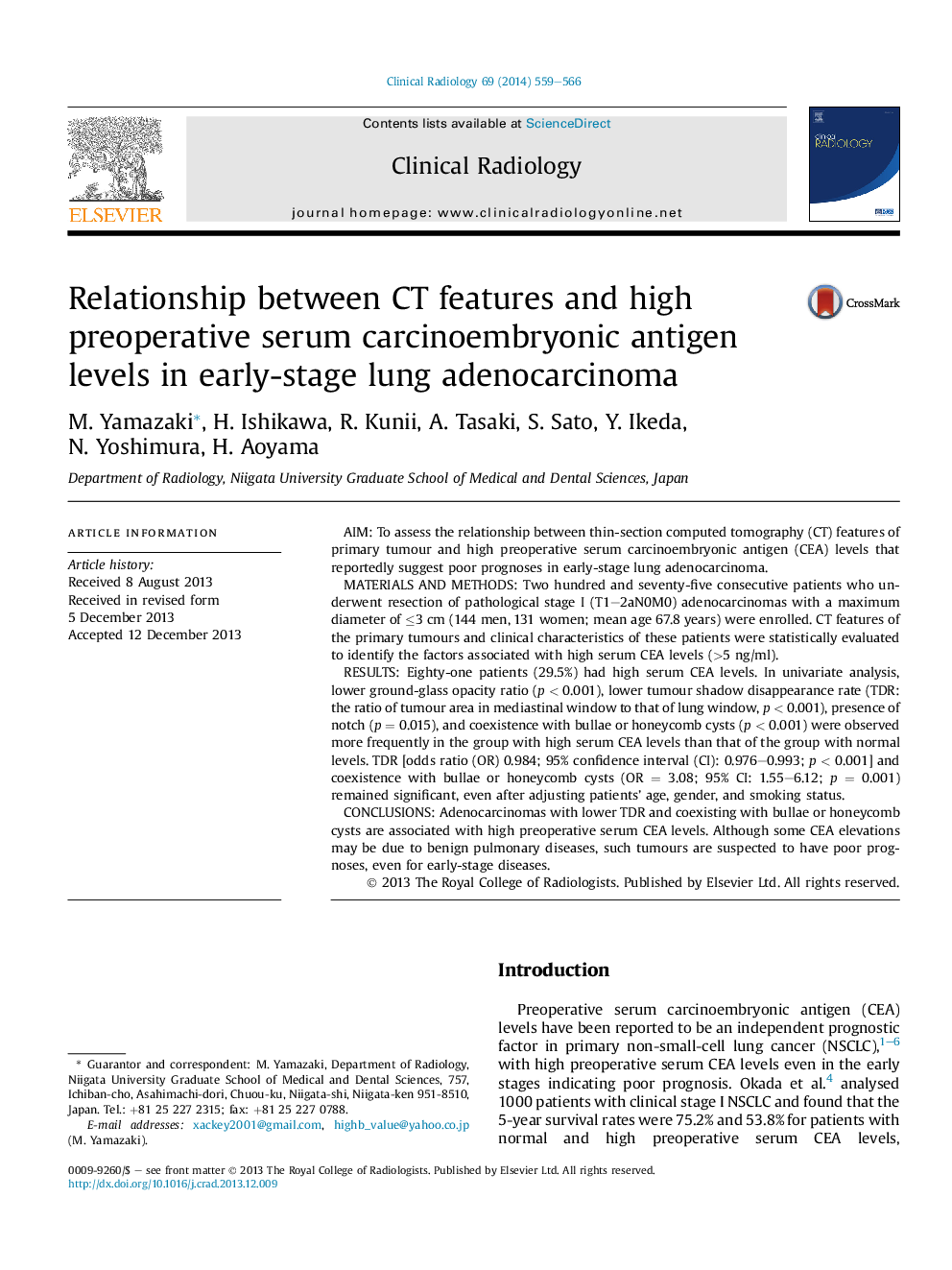| Article ID | Journal | Published Year | Pages | File Type |
|---|---|---|---|---|
| 3981736 | Clinical Radiology | 2014 | 8 Pages |
AimTo assess the relationship between thin-section computed tomography (CT) features of primary tumour and high preoperative serum carcinoembryonic antigen (CEA) levels that reportedly suggest poor prognoses in early-stage lung adenocarcinoma.Materials and methodsTwo hundred and seventy-five consecutive patients who underwent resection of pathological stage I (T1–2aN0M0) adenocarcinomas with a maximum diameter of ≤3 cm (144 men, 131 women; mean age 67.8 years) were enrolled. CT features of the primary tumours and clinical characteristics of these patients were statistically evaluated to identify the factors associated with high serum CEA levels (>5 ng/ml).ResultsEighty-one patients (29.5%) had high serum CEA levels. In univariate analysis, lower ground-glass opacity ratio (p < 0.001), lower tumour shadow disappearance rate (TDR: the ratio of tumour area in mediastinal window to that of lung window, p < 0.001), presence of notch (p = 0.015), and coexistence with bullae or honeycomb cysts (p < 0.001) were observed more frequently in the group with high serum CEA levels than that of the group with normal levels. TDR [odds ratio (OR) 0.984; 95% confidence interval (CI): 0.976–0.993; p < 0.001] and coexistence with bullae or honeycomb cysts (OR = 3.08; 95% CI: 1.55–6.12; p = 0.001) remained significant, even after adjusting patients' age, gender, and smoking status.ConclusionsAdenocarcinomas with lower TDR and coexisting with bullae or honeycomb cysts are associated with high preoperative serum CEA levels. Although some CEA elevations may be due to benign pulmonary diseases, such tumours are suspected to have poor prognoses, even for early-stage diseases.
